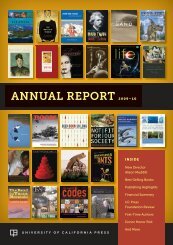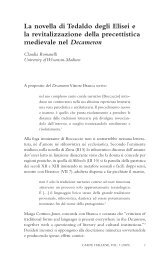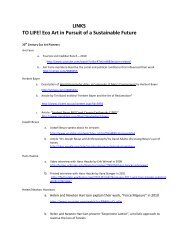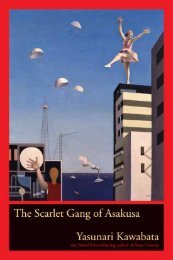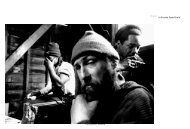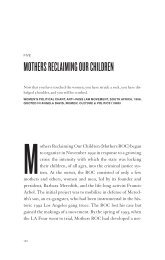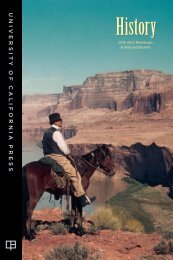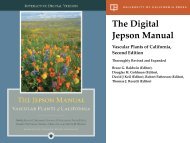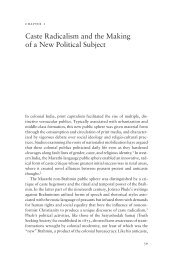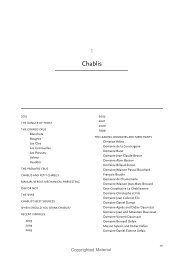Read Chapter 1 (PDF) - University of California Press
Read Chapter 1 (PDF) - University of California Press
Read Chapter 1 (PDF) - University of California Press
Create successful ePaper yourself
Turn your PDF publications into a flip-book with our unique Google optimized e-Paper software.
east harlem 13<br />
Today most <strong>of</strong> Pete’s Italian neighbors and all <strong>of</strong> his family have long<br />
since died or moved away. Indeed, Pete’s story demonstrates, perhaps<br />
more clearly than elsewhere, the complete cycle <strong>of</strong> intracity migration,<br />
from early influx to permanent settlement to upward mobility and abandonment.<br />
Part <strong>of</strong> this story is the story <strong>of</strong> public housing in New York—<br />
how visionary urban planners turned a thriving community into a<br />
demographic dumping ground in less than a decade. Pete is a witness to<br />
that transformation, but he is also a witness to the early history <strong>of</strong> Italian<br />
settlement along this avenue and its tributary streets, from the youth<br />
gang rumbles to the aging social clubs, establishing the well-worn pattern<br />
<strong>of</strong> ethnic immigration that echoes in each <strong>of</strong> the stories that follow.<br />
In “106th Street: The Puerto Ricans,” you will meet José. A scrappy<br />
Puerto Rican kid, José grew up, dodged gangs, and met his wife on the<br />
streets <strong>of</strong> East Harlem. After a tour in the army as far away as Staten<br />
Island and a brief sojourn in Florida during the crack cocaine epidemic <strong>of</strong><br />
the 1980s, José returned to the neighborhood with his wife, Cecilia, to<br />
raise their children. Wearing a Day-Glo Jets jacket and carrying a digital<br />
camera, he is a permanent fixture on the streets around 106th Street now.<br />
José maintains a website for the community, www.east-harlem.com, an<br />
evolving ode to a patch <strong>of</strong> New York real estate that, for all intents and<br />
purposes, was annexed by Puerto Rico after Puerto Rico was annexed by<br />
the United States.<br />
José was born in the 1950s, the decade <strong>of</strong> legend in Puerto Rican East<br />
Harlem. In the era after World War II, hundred <strong>of</strong> thousands <strong>of</strong> Puerto<br />
Ricans were encouraged to leave the island for the United States, New<br />
York City in particular. In the first year after the war, 39,000 Puerto Ricans<br />
made the journey, with an annual average <strong>of</strong> 50,000 in the next decade.<br />
Another 586,000 Puerto Ricans would leave the island for New York City<br />
in the 1960s. 7 It was a mass migration that rivaled that <strong>of</strong> the Italians<br />
before World War I, with two crucial differences. Since 1898 the United<br />
States has maintained an ambiguous claim on the island, and since 1952<br />
Puerto Rico has remained in political limbo, neither wholly independent<br />
as a nation nor fully incorporated as a state. 8 The Puerto Ricans arriving<br />
in New York in the twentieth century were not immigrants like the Italians;<br />
they were southern migrants, no different in legal terms from



